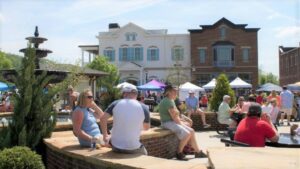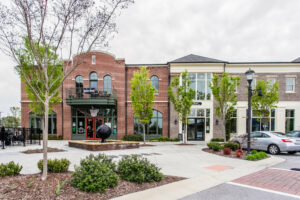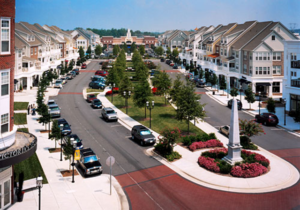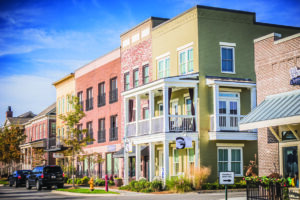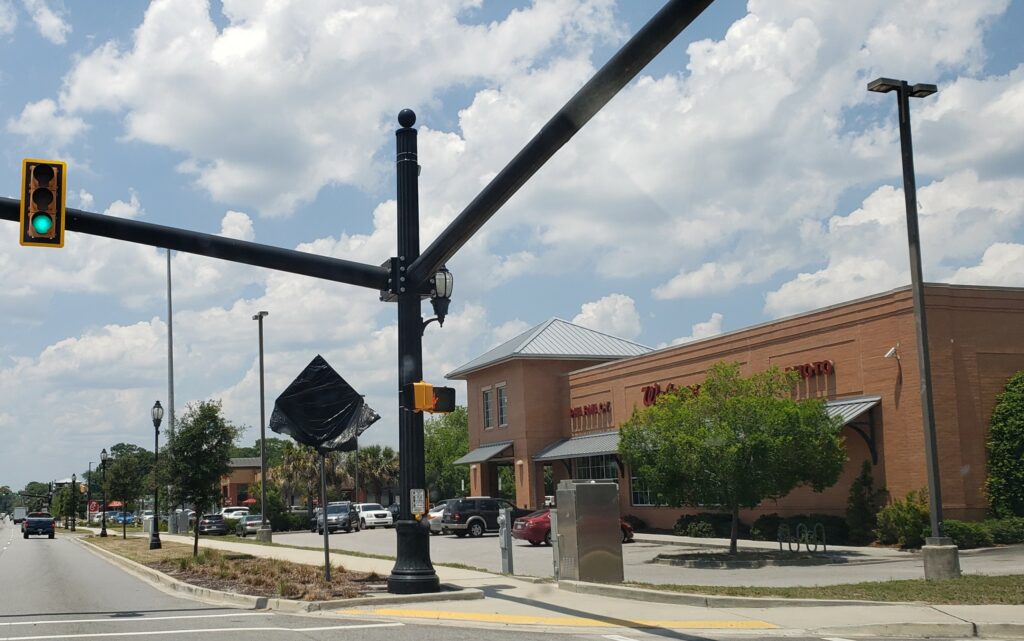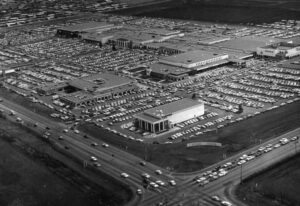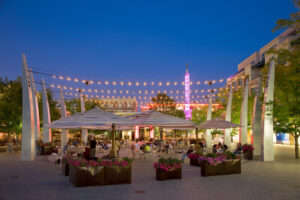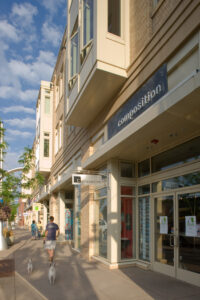WHAT THE COMMUNITY SAID
While Area 11 residents said they liked the close proximity to businesses, shops and restaurants, the second highest response for what they wanted to see more of was unique, walkable retail centers (similar to Cambridge Square in Ooltewah). Residents also expressed concern about the quality of commercial development in Area 11, highlighting issues such as a lack of trees, sidewalks, landscaping, green space, and transitions to neighboring residential areas.
Cambridge Square in Ooltewah, Sources: RiverStreet Architecture, Nooga Today
EXISTING CONDITIONS & TRENDS
Commercial Businesses Today
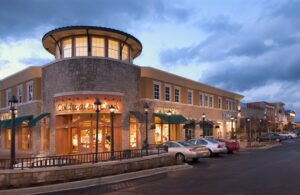
The Hamilton Place area is a regional shopping destination. In fact, retail, accommodations, food service, and health care account for 75% of all jobs in Area 11. Commercial zoning (which accommodates all of these uses) covers 13.3% of the land in Area 11. Commercial business is vitally important to Area 11, but commercial trends are changing dramatically.
The Changing Retail & Office Market
The continuing growth of online shopping and changing consumer preferences are having huge impacts on the national retail market. Some of the biggest national retailers that have closed all or nearly all stores since 2010 include Blockbuster, Borders, Dressbarn, Fred’s, Gymboree, HHGregg, The Limited, Payless ShoeSource, Sports Authority, and Toys R Us (Retail Wire, 2019). Retail Wire also reported that 8,139 retail stores closed in 2017 in the U.S., followed by 5,524 in 2018. https://www.retailwire.com/discussion/america-has-too-many-retail-stores/ A report released by UBS Securities in April 2019 predicted this downturn in bricks-and-mortar retailing to continue.
Following these national trends, several retail stores in Area 11 have already closed, including Sears, JCPenney, Victoria’s Secret, PINK, Forever 21, Gap, Ethan Allen Interiors, Dress Barn, and Pier One Imports.
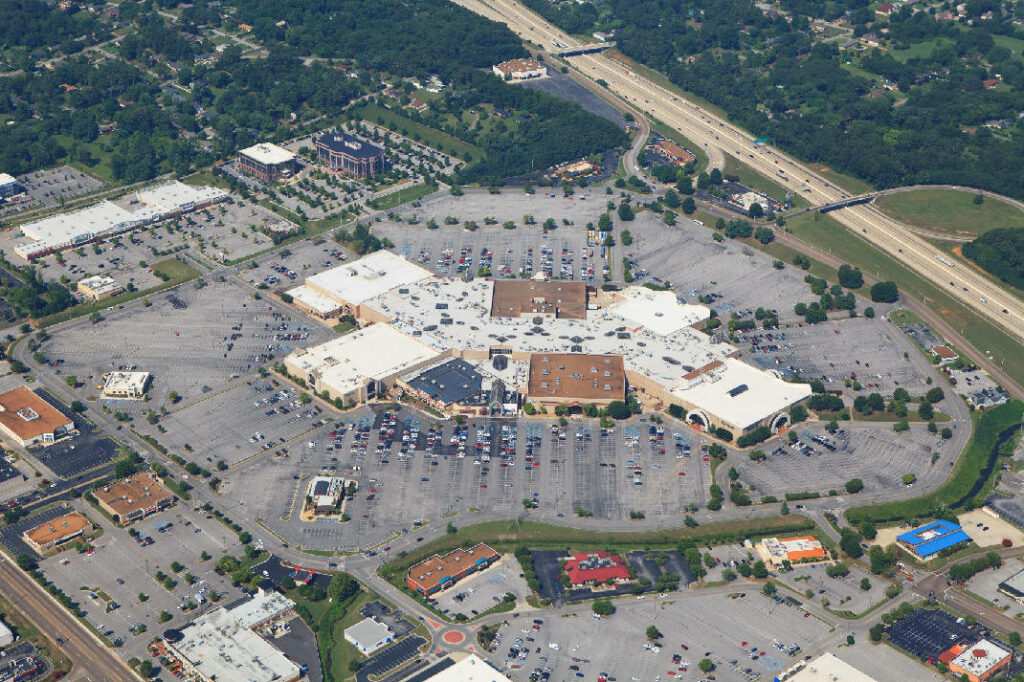
Similarly, other types of businesses are reporting a decreasing need for office space and parking due to the rise in telecommuting. The COVID-19 pandemic has merely accelerated these trends.
Walkable Commercial Centers
As a result of these changes, commercial areas of the future are likely to look very different. In fact, regional malls and strip commercial corridors across the country have been transitioning to walkable, mixed-use centers in recent years, integrating more entertainment, food, office, and some residential uses (International Council of Shopping Centers, 2017).
While many of us may not be used to seeing walkable commercial centers, communities have been built that way for hundreds of years. It is only within the last few decades that developers have been building the strip commercial corridors and regional malls that everyone must drive to.
- A cluster of different uses around a public park or civic building
- Sidewalks
- Storefronts that open onto the sidewalk
- Stores, restaurants, offices, civic buildings, and housing
- Two-story (or taller) buildings
- Landscaping and public art
- Shared parking
OPPORTUNITIES & CHALLENGES
While the future of the bricks-and-mortar retail industry is uncertain at best, these changes open some very interesting redevelopment opportunities in Area 11. Over time, walkable Commercial Centers can provide a variety of community needs (such as shopping, dining, housing, and jobs) and serve as focal points and community gathering spaces for neighborhoods, but they do come with some challenges.
Adding diversity to a community’s housing can take multiple forms, many of which can be designed to “fit in” with, or near, existing neighborhoods or commercial centers.
Clustered, mixed-use development generates higher tax revenue per acre for the city than single-use, single-story retail.
Current zoning regulations don’t promote walkable commercial centers with a mix of uses.
The feasibility of walking, bikes, transit increases with clustered, mixed-use development.
Lending institutions have less experience with mixed-use development and are therefore less likely to approve loans.
When housing is incorporated in commercial centers, some people have the ability to get to work, or other essential daily needs, without having to drive.
Keeping the spaces leased is sometimes a concern for developers due to a lack of experience with mixed-use developments.
The ability to park once and walk to multiple stores, reduces the amount of traffic turning into and out of multiple businesses, thereby alleviating some traffic congestion along the major corridors.
Due to the high desirability and limited supply of these developments, housing in mixed-use walkable centers are often higher priced than single-use residential-only neighborhoods.
The diversity and availability of housing in the community can be increased, by including townhomes and upper floor apartments in the commercial center.
Clustering a mix of commercial and higher density residential uses together reduces the encroachment of those uses into existing single-family neighborhoods.
COMMERCIAL DEVELOPMENT: CONCLUSION
The growth in online shopping, consumer preferences, demographic shifts, and the COVID-19 pandemic have all affected—and continue to affect—the viability of new commercial businesses. As many other communities are doing across the country, there is a need to reconsider how commercial centers are structured. How should commercial locations in Area 11 that have been impacted by COVID and online shopping be redeveloped?
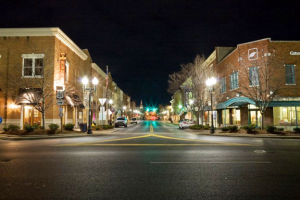
Survey Time!
Click the button below to begin the survey.
Questions?
Contact Eric Matravers – Area 11 Project Lead, at areaplan@chattanooga.gov or call 423-643-5920.


